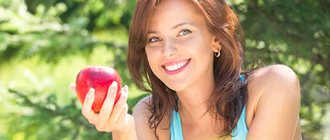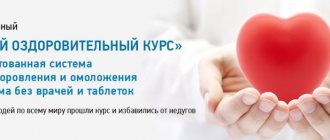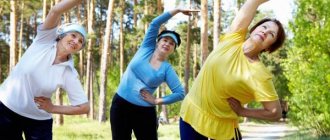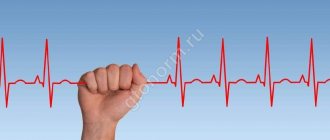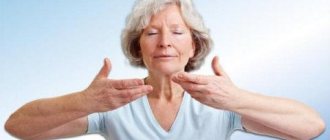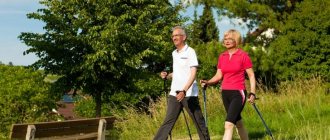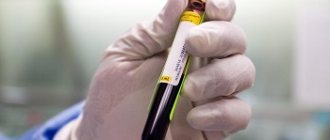The heart is one of the most important human organs. Thanks to its stable and proper functioning, other organs are saturated with oxygen and nutrients. Supporting the vital functions of the body is possible only if the compressor capacity of the heart muscle is normal. This especially applies to people involved in sports, both professional and amateur. Even if you go to the gym and your workouts are far from exhausting, you should know your level of maximum load or the so-called effective heart load index.
How does the heart work normally?
How does exercise affect the heart?
Is it possible for heart damage due to exercise?
How to avoid heart problems?
What is the effective heart load index (VIDEO)
What are the contraindications to physical activity?
Dynamic loads
The most beneficial thing for the body is dynamic load - that is, movement. This type of physical activity includes running, swimming, walking, as well as such popular exercises as lunges, squats, and crunches.
What do regular dynamic loads give?
- A well-developed exercise program helps build the body;
- Exercise promotes muscle growth;
- Energy consumption increases - not only during load, but also at rest;
- Lung volume and depth of breathing increases;
- All tissues of the body are more intensively supplied with oxygen;
- Metabolism improves;
- The risk of developing diseases of the musculoskeletal system is reduced.
Static loads
Load is not necessarily movement. Staying in one position for a long time can also be a strain on the muscles. If your health does not allow you to practice dynamic loads, you can resort to static ones. They do not require active movement; on the contrary, during the process you must maintain a certain position or change it very slowly (as, for example, in yoga or Pilates). Such loads are indicated even for diseases of the cardiovascular system or musculoskeletal system, which do not allow dynamic activity.
How to calculate heart rate for sports
The abbreviation HR stands for “heart rate,” in other words, it is the pulse. The easiest way to measure it is to place your finger on your wrist about 3-5 cm below the bend of the hand and count your heart rate for 15 seconds. Multiply the result by 4 to get the number of heartbeats per minute.
The same work can easily be done by modern fitness bracelets and smart watches. If you just started playing sports, these devices will help you track your daily activity and heart rate.
Measuring your pulse during exercise is very important: this allows you to understand how your heart reacts to physical activity and prevent overload.
In an adult, the resting pulse should vary from 60 to 80 beats. When under load, the norm is considered to be up to 200 beats - and the figure of 100-130 beats per minute belongs to the zone of moderate loads, during which fat is intensively burned. 130-170 beats per minute are already intense loads that are suitable for training the heart. Above are high-intensity workouts, which are stressful for the body. You can only exercise with such a pulse under the guidance of an experienced trainer.
Please note that your heart rate may be higher if you exercise in a stuffy room, get sick, or drink coffee shortly before your workout. In this case, monitor your well-being - the higher the pulse, the harder the load is tolerated.
How does exercise affect the heart?
With any type of training intensity, the muscles begin to work, during which their need for oxygen increases, the heart muscle begins to contract more often in order to fill this need. When the heart works intensively, blood pressure (BP) increases, and the body has to launch the hypotensive system, which is responsible for reducing it.
To obtain energy to carry oxygen, the body first burns carbohydrates. After a 15-20 minute workout, it begins to burn fat. The hormonal system of the adrenal glands and thyroid gland also begins to work, and the composition of the blood improves. Due to the work of the muscles that compress the vessels, pushing out blood, then relax filling the vessels with blood, the load on the heart is reduced. Therefore, even a little physical activity is beneficial for people even with severe heart disease.
Blood pressure and sports
Normally, a person’s blood pressure should be approximately 120/80. But people who lead a healthy lifestyle may have lower blood pressure - for example, within the normal range, blood pressure is 100/60.
Sports are not contraindicated for people with hypertension - but they need to carefully monitor the level of stress and start exercising in a gentle manner. You can start with walking - first accustom yourself to walking more, then increase the pace. Later you can switch to running or swimming.
It is better to start training after consulting with your doctor.
IMPORTANT! If your blood pressure exceeds 190\110 at least periodically, if during physical activity you experience a burning sensation or pressure in the chest, intensive training, unfortunately, is contraindicated for you. But you can do static exercises, such as yoga.
Is it possible for heart damage due to exercise?
Any physical activity, and especially stress on the heart, should be done wisely. If after training you experience pain in the chest area or a change in rhythm, you should consult your doctor. A specialist will help you figure out the right way to strengthen your heart muscle. Any activity is stressful for an unprepared body, and if you do not know your level of permissible effective load on the heart, you can get serious consequences:
- pain in the heart area;
- arrhythmia;
- cardiac hypertrophy;
- bradycardia;
- hypotension;
- exacerbation of existing diseases;
- myocardial infarction.
Charging at the workplace
Everyone knows that a sedentary lifestyle has a negative impact on health. It is not without reason that most office workers, who sit for up to 10 hours a day, have musculoskeletal diseases.
To prevent the development of illnesses, experts recommend doing a short warm-up at the workplace every two hours. It looks like this:
- First, pay attention to your neck. Slowly rotate your head back and forth, up and down. Repeat this at least 10 times.
- Then stretch your arms. Lift them up, clasp your palms together and stretch as high as possible. Next, make circular movements with your shoulders, 10 times.
- Pay attention to your wrists. Make 15 circular movements with your brushes.
- Stand on the floor and try to reach your palms to your feet without bending your knees. If it doesn't work, stretch as far as you can. Hold the position for 15 seconds.
- Sit on the edge of a chair with your legs extended in front of you without bending your knees. Keeping your back straight, pull your feet towards you and then back.
This complex must be carried out every 2-3 hours at work.
Physical education tests
OPTION
II
1.
Physical education is
...
A. A lesson during which physical exercises are performed.
b. Education of physical qualities and training in motor actions.
V. Part of human culture.
d. The result of improving people's abilities.
2.
Physical culture is focused on improving
...
A. Motor actions.
b. Natural physical properties of man.
V. Physical and volitional qualities of people.
d. Human performance.
3.
A distinctive feature of physical culture is
...
A. The process of developing physical qualities.
b. Physical development of people.
V. Learning motor actions. d. Doing physical exercises.
4.
Physical development means
…
A. A set of indicators such as height, weight, chest circumference, vital capacity, dynamometry.
b. A level determined by heredity and regularity of physical education and sports.
V. The process of changing the morpho-functional properties of an organism throughout an individual’s life.
d. Characteristics of muscle strength, speed, endurance, flexibility, coordination.
5.
Physical fitness, acquired in the process activities, is characterized by ...
A. Level of performance and versatility of motor experience.
b. Resistance to the process of fatigue and the effects of various unfavorable factors.
c. High results in educational, labor and sports activities.
d.Good development of respiratory and circulatory systems, sufficient margin of reliability, efficiency and economy.
6.
Physical exercise is called
…
A. Forms of motor actions that increase human performance.
b. Movements performed in physical education lessons and during morning exercises.
V. Combinations of motor actions that contribute to solving the problems of physical education.
d. Motor actions, dosed according to the amount of load and duration of execution.
7.
The load of physical exercise is characterized
…
A. The magnitude of their impact on the body.
b.The purpose of the lesson.
V. How you feel during class.
d. Time and number of repetitions of motor actions.
8.
The amount of physical exercise load is determined by
...
A. The duration of motor actions.
b. A combination of volume and intensity of motor actions.
V. The number of repetitions of motor actions.
d. Intensity of motor actions.
9.
If after performing the exercises, the heart rate is restored within 30 seconds to the level that was at the beginning of the lesson, then this indicates that the load
...
A. It is tolerated relatively easily by the body.
b. It is small and should be enlarged.
V. Quite large, but it can be repeated.
d. Excessive and needs to be reduced.
10.
The intensity of exercise can be determined heart Moderate intensity causes the heart rate to increase to ...
a. 120-130 beats per minute.
b. 130-140 beats per minute.
V. 140-150 beats per minute.
150 or more beats per minute.
11.
Regular physical exercise helps
...
A. A person who exercises gets tired more slowly and recovers faster.
b. During classes, motor actions are performed to help develop strength and endurance.
V. A person who engages in physical exercise is able to perform a greater amount of physical work in the allotted period of time.
d. The fatigue achieved in this case activates the processes of recovery and adaptation to increasing loads.
12.
First aid for hitting a hard surface and causing bruises is that the bruised should be... a
. Cool.
b. Heat.
V. Cover with iodine mesh.
d. Rub, massage.
13.
Hardening means
…
A. Swimming in cold water and walking barefoot.
b. Using the healing powers of nature and hygienic factors.
c. Adaptation of the body to environmental influences.
d. Combination of air and sun baths with exercises.
14.
Which of the following recommendations should not be followed when organizing classes with hardening procedures?
A. The lower the air temperature, the more intensively you need to perform the exercises, since hypothermia must not be allowed.
b. It is not recommended to exercise in intense sunlight.
c. After class you need to take a cold shower.
d. The higher the air temperature, the shorter the classes should be, since overheating of the body should not be allowed.
15.
Hardening procedures are not recommended
a. Right after school.
b. Before doing homework.
V. Before meals. d. Before bed.
16.
Correct breathing is characterized by...
a. Inhale through the nose and exhale through the mouth.
b. Inhale longer. c. Longer exhalation.
d. The ratio of the duration of inhalation and exhalation does not matter.
17.
When performing exercises, inhalation should not be done during ... a
. Bending the body back.
b. Crossing arms and turning the body.
V. Returning to the starting position after turning or rotating the body.
d. Recommendations regarding the timing of inhalation or exhalation are not necessary.
18.
It's called posture
…
A. The usual posture of a person in an upright position.
b.Spring characteristics of the spine and feet.
V. No disorders of the spine or feet.
d. Shape of the spine.
19.
Signs that are not characteristic of correct posture:
a. A straight line can be drawn through the ear, shoulder, hip joint and ankle.
b. Raised chest.
V. Shoulders back, straight back. d.3 tilted or lowered head.
20.
Your posture can be considered correct if you, standing near a wall, touch it
...
A. The back of the head, lower back, buttocks, heels.
b.Back of the head, shoulder blades, buttocks, heels.
V. Back of the head, back, heels.
g. Shoulder blades, buttocks, heels.
21.
The main cause of poor posture is
…
A. Carrying a bag or briefcase in one hand.
b. Soft bed with high pillow.
V. Design of school tables. d. Muscle weakness.
22.
When Russian athletes first participated
in
the Olympic Games, there were only 5 of them. Nevertheless , figure skater Nikolai Panin-Kolomenkin managed to become an Olympic champion.
This happened in a. 1904 at the III Olympic Games in St. Louis.
b. 1912 at the V Olympic Games in Stockholm. V. 1908 at the IV Olympic Games in London.
1924 at the 1st Winter Olympic Games in Chamonix.
23.
The term "Olympics" means
…
A. Year of the Olympic Games.
b. Four-year period between Olympic Games.
V. A meeting of athletes in one city.
g. Synonymous with the Olympic Games.
24.
Vladimir Kuts, Valery Borzov, Viktor Saneev, Valery
...
A. Athletics.
b. Swimming.
V. Wrestling and boxing.
Hockey.
25. In what year were the Olympic Games held in our country?
A. In 1984, the XXIII Olympic Games were held in St. Petersburg.
b. In 1980, the XXII Olympic Games were held in Moscow.
V. The Olympic Games were planned to be held in 1944, but they were canceled due to World War II.
d. The Olympic Games have not yet been held in our country.
26.
Following a daily routine helps improve health
...
A. The main tasks are distributed evenly throughout the day.
b. Allows you to properly plan things during the day.
V. Allows you to avoid unnecessary physical stress.
d. Determines the rhythm of the body's work.
27.
Replacing some types of activities with others, regulated by the daily routine, allows you to maintain performance
...
A. It has a positive effect on a person’s physical and mental state.
b.Rhythmic alternation of work and rest prevents the occurrence of overstrain.
V. Relieves fatigue of nerve cells in the brain and dulls the feeling of general fatigue
d. The daily routine does not involve replacing one type of activity with another.
28.
Systematic and well-organized physical exercise improves health because
...
A. Allows a person to work more fruitfully and lead an active lifestyle.
b. The heart increases in volume and works more efficiently.
V. Provides nutrients to the body's organs.
d.Help increase the body's reserve capabilities.
29.
In what sequence should the exercises listed hygienic gymnastics?
- Run at a relaxed pace.
- Running with transition to walking.
- Walking with a gradual increase in
step frequency. - Jumping.
- Exercises to strengthen muscles and increase
flexibility. - Alternately tensing and relaxing muscles
- Sipping..
8.
Breathing exercises.
A. 1,2, 3,4, 5, 6, 7, 8.
b. 7,6,3, 1,8,5,4,2,8.
V. 8, 3,4, 5, 6, 7, 1,2,8.
g. 3,7, 5, 4, 1,6,8,2.
30.
In physical education lessons there are preparatory ...
A. The Academy of Pedagogical Sciences requires the selection of parts in a lesson.
b. This makes it more convenient for the teacher to distribute exercises of different nature.
V. It is necessary to control the dynamics of the performance of those involved.
d. It is more convenient to cultivate physical qualities in the preparatory part, to master the technique in the main part, and it is better to ensure the restoration of the body in the final part.
31.
What sequence of influences on physical qualities is most effective in the main part of the lesson on general physical training?
- For speed.
- For flexibility.
- For strength.
- For endurance.
A. 1,2, 3, 4.
6.2,3, 1,4
V. 3.2, 4, 1.
g. 4, 2,3, 1.
32.
Strength as a physical quality is understood as
…
A. A complex of muscle properties that creates great tension, allowing it to overcome resistance.
b. A complex of properties of the body that allows one to overcome external resistance or counteract it.
V. Properties of muscles due to which the ability to move large masses at a certain speed is realized.
d. A person’s ability to influence external forces due to muscle tension.
33.
A distinctive feature of the exercises used
...
A. The person's own weight is used as a burden.
b. They are performed until fatigue.
V. The weight of various sports equipment is used as a burden.
d. They cause significant muscle tension.
34.
When creating sets of exercises to reduce body weight using strength exercises, it is recommended
...
A. Use exercises with light weights and high repetitions.
b. Completely work one muscle group and only then move on to exercises that load another muscle group.
V. Locally influence individual muscle groups located closest to the areas of fat deposits.
d. Plan a large number of approaches and limit the number of repetitions in one approach.
35.
By speed as a physical quality we mean
a. A complex of human properties that allows one to quickly gain speed and move at high speed.
b. A complex of body properties that allows you to quickly respond to signals and perform movements with high frequency.
V. A complex of human properties that allows one to perform short work in a minimum period of time.
d. A complex of properties of the body that determine the speed of movement in space.
36.
In what sequence is it advisable to perform the exercises listed below to increase running speed
. Breathing exercises.
- Walking.
- Running in place at high frequency.
- Breathing exercises during rest
- Repeated short distance running.
- Easy long run.
- Jumping exercises
with and without weights.
A. 1.2, 3.4, 5, 6, 7
b. 7,5,4,3,2,6,1.
V. 2, 1,3,7,4,5,6. 3,5,4,7,6,2,1.
37.
To develop speed,…
a. Outdoor and sports games.
b. Strength exercises performed at a high tempo. V. Motor actions performed at maximum speed.
d. Exercises for reaction speed and frequency of movements.
38.
The best conditions for the development of reaction speed are created
...
A. Speed-strength exercises.
b. Outdoor and sports games.
V. Jumping up from a place.
d. Dribbling the ball with a “snake”.
39.
Flexibility as a physical quality means
a. A set of properties of the musculoskeletal system that determines the depth of inclination.
b. A set of properties of an organism that determine the mobility of its parts.
V. The ability to perform movements with a large amplitude due to muscle contractions.
d. The ability to perform movements with a large amplitude when using additional weights.
40.
To develop flexibility,…
a. Jerky movements.
b. Swing exercises with and without weights.
V. Active springing exercises. d. Movements performed with large amplitude.
41.
When cultivating flexibility, one should strive for
…
A. Increased mobility of the spine and elbow joints.
b. Achieving maximum range of motion in the main joints.
V. Harmoniously increasing mobility in the main joints.
d. Restoring the normal range of motion of the joints.
42.
How are “flexibility” exercises dosed, that is, how many movements should be done in one series? The exercises
...
A. Before pain appears.
b. Before sweat appears.
V. Until the range of motion begins to decrease.
d. 8-16 cycles of movements in a series.
43.
Endurance as a physical quality means
...
A. A complex of properties that makes it possible to perform a variety of physical activities.
b. Ability to perform a large amount of physical work and maintain specified work parameters.
V. The ability to perform physical work for a long time without getting tired.
d. A complex of body properties that determine the ability to resist fatigue.
44.
Human endurance does not depend on
…
A. Muscle strength.
b. Willpower.
V. Strength of the musculoskeletal system.
d. Capabilities of the respiratory and circulatory systems.
45.
Exercises used to develop endurance
...
A. Maximum range of motion.
b. High intensity.
V. Maximum activity of the respiratory and circulatory systems.
d. Active work of most body systems.
46.
When developing endurance, load The health regime causes an increase in heart
...
a.120 beats per minute.
b. 140 beats per minute.
V. 160 beats per minute.
160 or more beats per minute.
47.
Physical exercise technique is commonly called
…
A. Perfect forms of motor actions.
b. A method for expediently solving a motor problem.
V. Composition and sequence of movements when performing exercises.
d. Method of performing exercises.
48.
When analyzing technology, it is customary to identify the basis, leading The basis of technology is understood
...
A. A set of elements characterizing the individual characteristics of performing a holistic motor action.
b. The composition and sequence of elements included in a motor action.
V. A set of elements necessary to solve a motor task.
d. The most important part of a certain method of solving a motor task.
49.
In the process of learning motor actions, methods of integral or disjointed exercise The choice of method depends on
...
A. Possibilities of division of motor action.
b. An element without which the performance of a motor action is impossible.
V. Teacher's preferences. d. Complexities of the basic technology.
50.
It is recommended to begin the process of learning a motor action by mastering
…
A. Starting position.
b. Leading exercises. V. Leading technical link.
g. Fundamentals of technology.
You have completed the task. Congratulations!
1
Calorie counting
If you want to not only become healthier, but also lose weight, it is important to pay attention to nutrition. Diet determines 70% of weight loss success. The most effective way to lose weight is to count calories. In order to accurately calculate them, you need to purchase a kitchen scale. It is convenient to use various applications for counting - they automatically calculate calorie content depending on the weight of the product. To maintain healthy and comfortable digestion, an adult should consume about 1700 kcal for women and about 2200 kcal for men. To lose weight, it is enough to reduce this number by 20%.
How to avoid heart problems?
Modern man is accustomed to solving problems as they arise. But it is important to remember that preventing diseases is easier than treating them. A cardiologist is responsible for the normal functioning of the heart muscle and helps to identify malfunctions in its functioning in a timely manner. Preventive consultations are necessary even for healthy people. The doctor can tell you what tests need to be done in your case:
- blood test from the group of cardiac risk indicators (AST, ALT, C-reactive protein, cholesterol, triglycerides)
- ECG
- EchoCG
- blood pressure monitoring
- Holter ECG monitoring (daily or during training)
The most important thing for maintaining heart health is timely medical care or timely preventive measures. In this case, private medicine has the opportunity to provide clients with a flexible schedule at a time convenient for them, without queues and stress. The presence of modern equipment and highly qualified doctors, which is also important for maintaining health and for the correct treatment of already known diseases.

